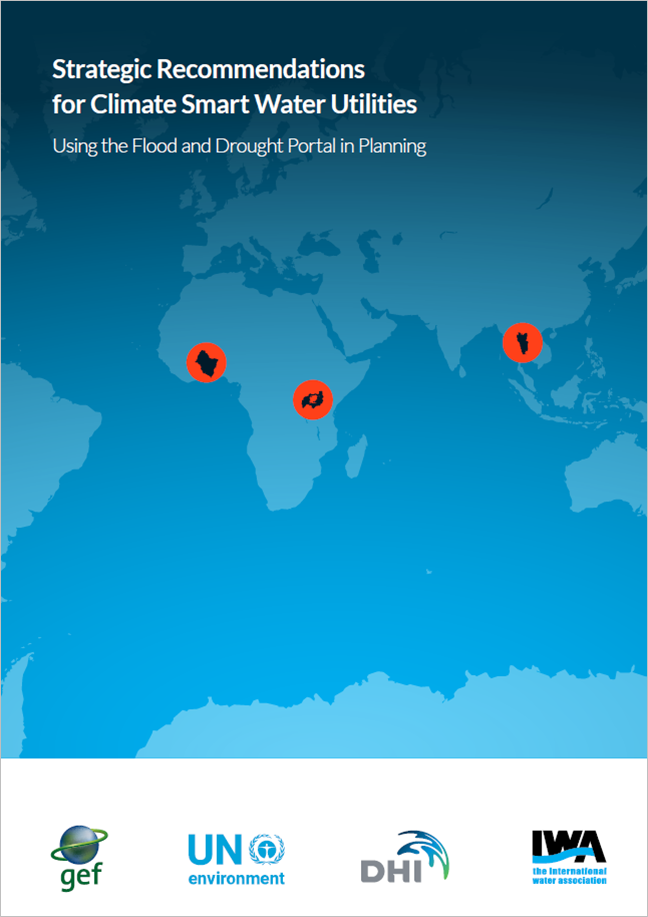Strategic Recommendations for Climate Smart Water Utilities: Using the Flood and Drought Portal in Planning
The effect of climate change on the hydrological cycle is becoming a growing phenomenon and resulting in impacts including flood and drought events, disappearance of glaciers, decrease in groundwater recharge, and water quality degradation (e.g. oxygen depletion in water reservoirs during extreme heat events) (WHO, 2017).
Such events are becoming increasingly common, more severe and less predictable with increasing climate variability and change. Stakeholders from catchment to tap have a role to play in strengthening climate resilience. Water utilities, in particular, need to have sustainable and resilient water resources management to ensure water supply continuity and to fulfill their responsibility to deliver safe and secure water to their customers.
This document focuses on strategic recommendations for water utilities on:
- Why and how water utilities can integrate climate change impacts into planning and management of water resources, specifically through WSPs; and
- How to use the Flood and Drought Portal (www.flooddroughtmonitor.com), to better include climate data and information into WSP, ensuring its climate resilience


